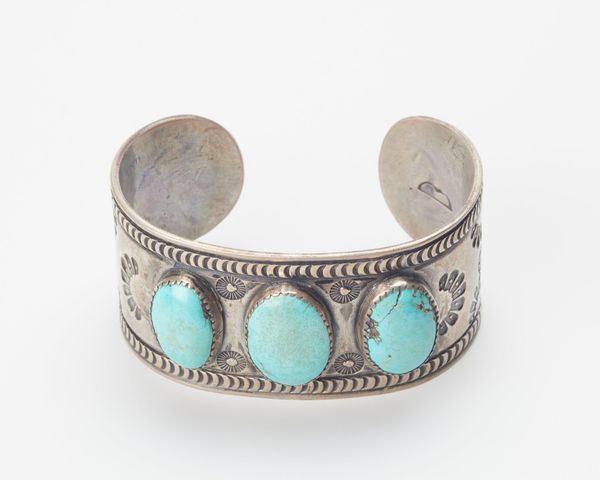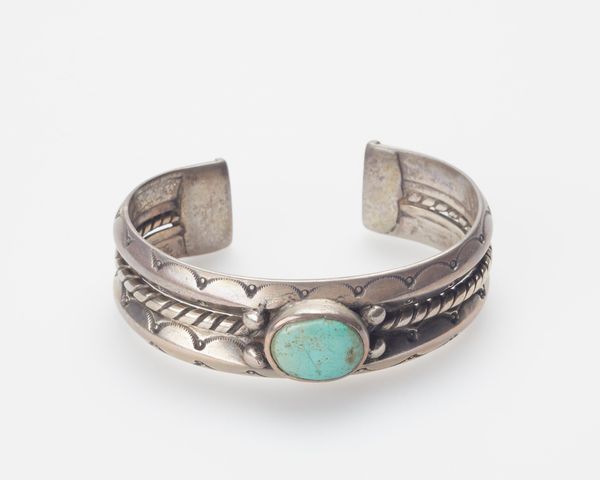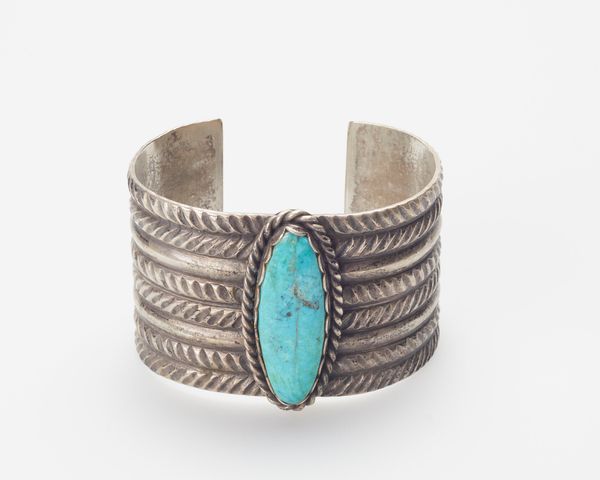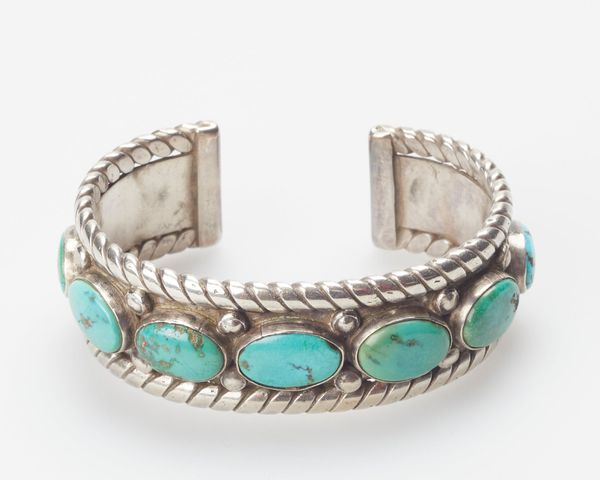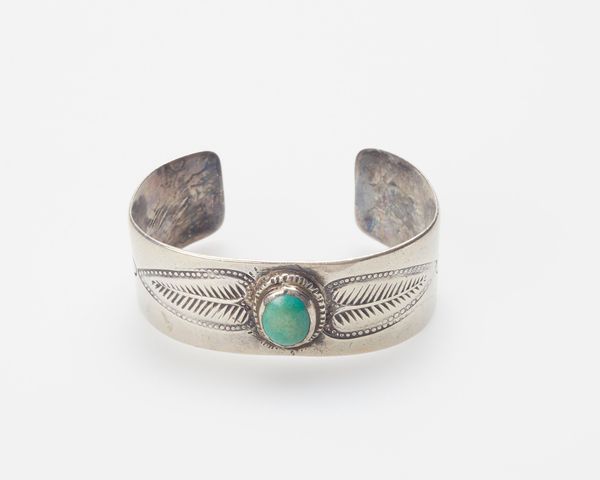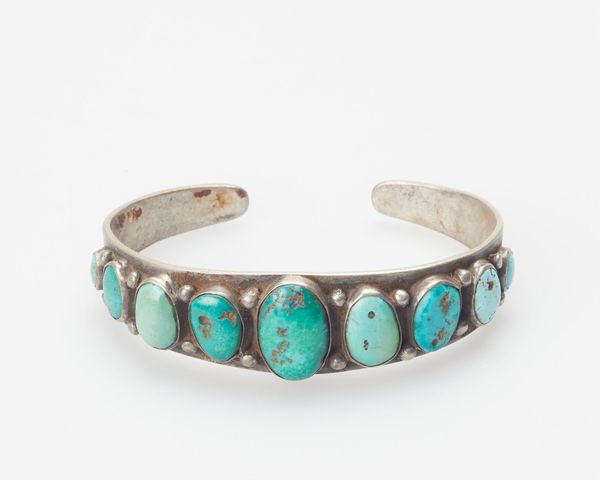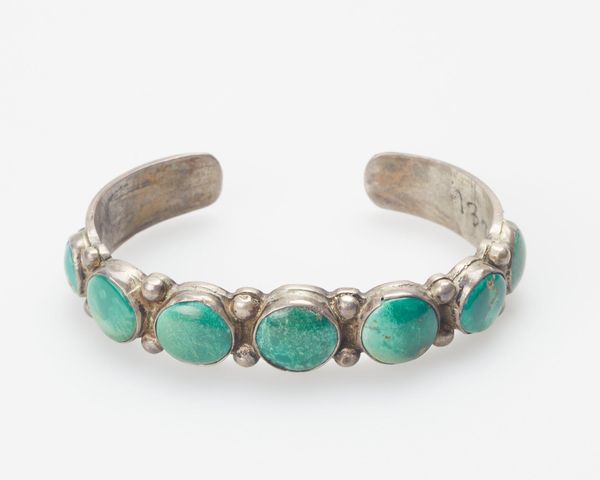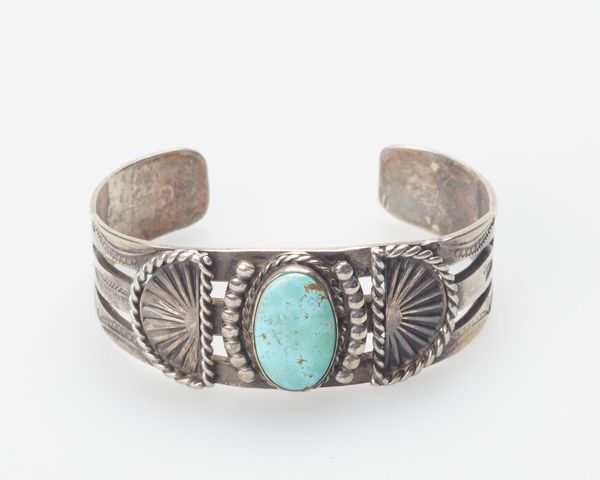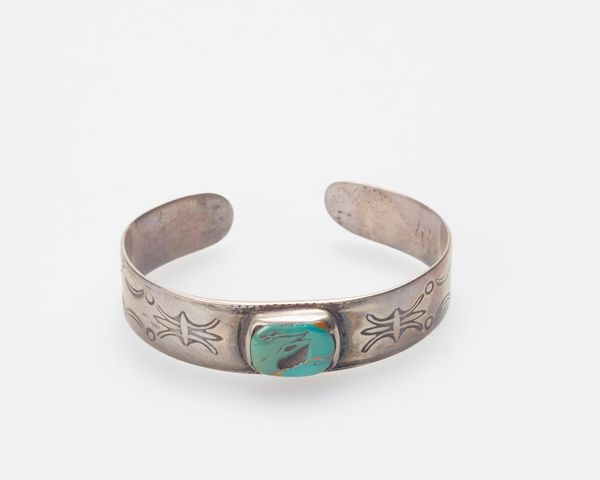
silver
#
silver
#
indigenous-americas
Copyright: Public Domain
Editor: Here we have a silver bracelet, created around 1940 by a Navajo artist. It's on display here at the Minneapolis Institute of Art. The striking turquoise stone really pops against the aged silver. It looks like a heavy, substantial piece. How would you interpret this piece within its historical context? Curator: This bracelet speaks volumes about the evolving role of Navajo artistry in the 20th century. By 1940, the market for Native American jewelry was heavily influenced by tourism and the broader American aesthetic. We see the persistence of traditional techniques – hand-worked silver, use of turquoise which carries spiritual and cultural significance, and stamped designs reflecting connections to the land. But consider also that silversmithing among the Navajo gained traction precisely because it offered economic opportunity during periods of displacement and hardship. Editor: So it’s both art and a reflection of economic pressures? Curator: Precisely. And more than that, the design may appear decorative to contemporary eyes, but each symbol is part of a visual vocabulary connected to Diné beliefs and cosmology. The degree to which these were subtly altered or deliberately emphasized for outside consumption reveals the complex negotiation between cultural preservation and economic survival. The scale itself, that wide band, signals a bold visual statement, catering to developing tastes for Southwestern ornamentation. Editor: It’s fascinating how much is embedded in this single piece. Curator: Indeed. This bracelet reveals how Native American artists engaged with and navigated the complexities of cultural exchange, challenging simple narratives of appropriation and authenticity. Considering how the style has evolved since, one has to ask how ideas about ‘traditional’ Native American jewelry have changed through the influence of popular culture. Editor: I see your point. It definitely prompts me to think beyond just the aesthetics and appreciate the layers of history within it.
Comments
No comments
Be the first to comment and join the conversation on the ultimate creative platform.
